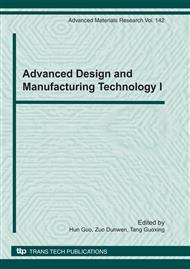p.99
p.103
p.107
p.112
p.117
p.122
p.126
p.130
p.134
Friction and Wear of Polished Single Crystal Silicon at Different Area
Abstract:
A friction and wear experiment was carried out at different areas of single crystal silicon under same surface roughness. Friction mechanisms at different area were analyzed by STM and 3D profiler. The result showed that the friction and wear properties were obviously different at different area although they had same surface roughness. The friction and wear properties of the single crystal silicon where closest to inner-cycle internal were best while the farther from the inner-cycle silicon area or closer to crystal silicon cylindrical, the worse friction and wear properties were. Abrasive wear and adhesive wear were the primary wear mechanisms.
Info:
Periodical:
Pages:
117-121
Citation:
Online since:
October 2010
Authors:
Price:
Сopyright:
© 2011 Trans Tech Publications Ltd. All Rights Reserved
Share:
Citation:


